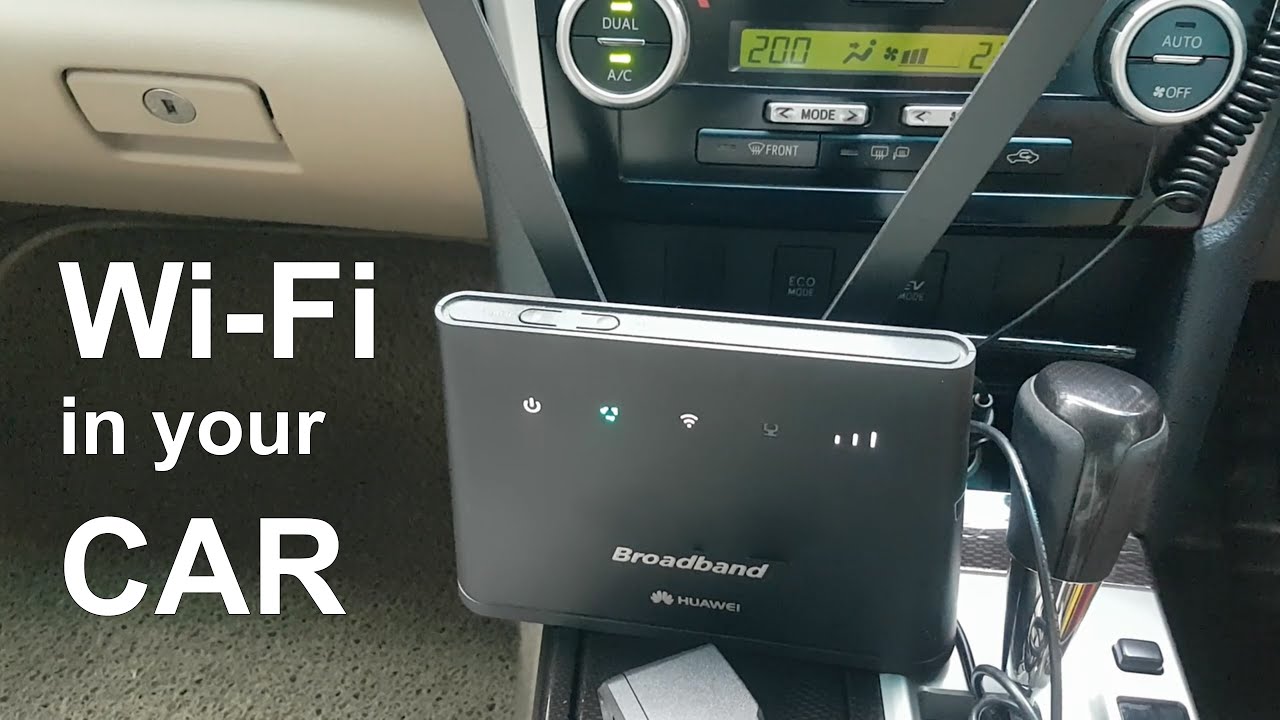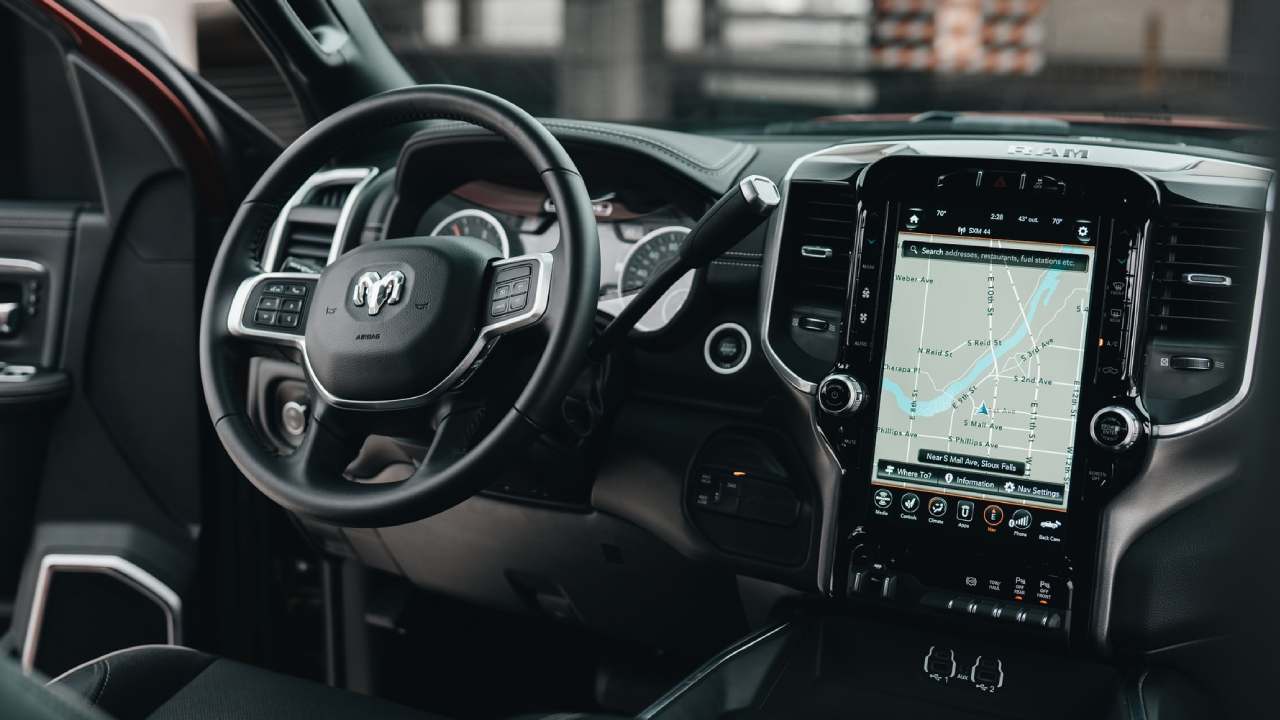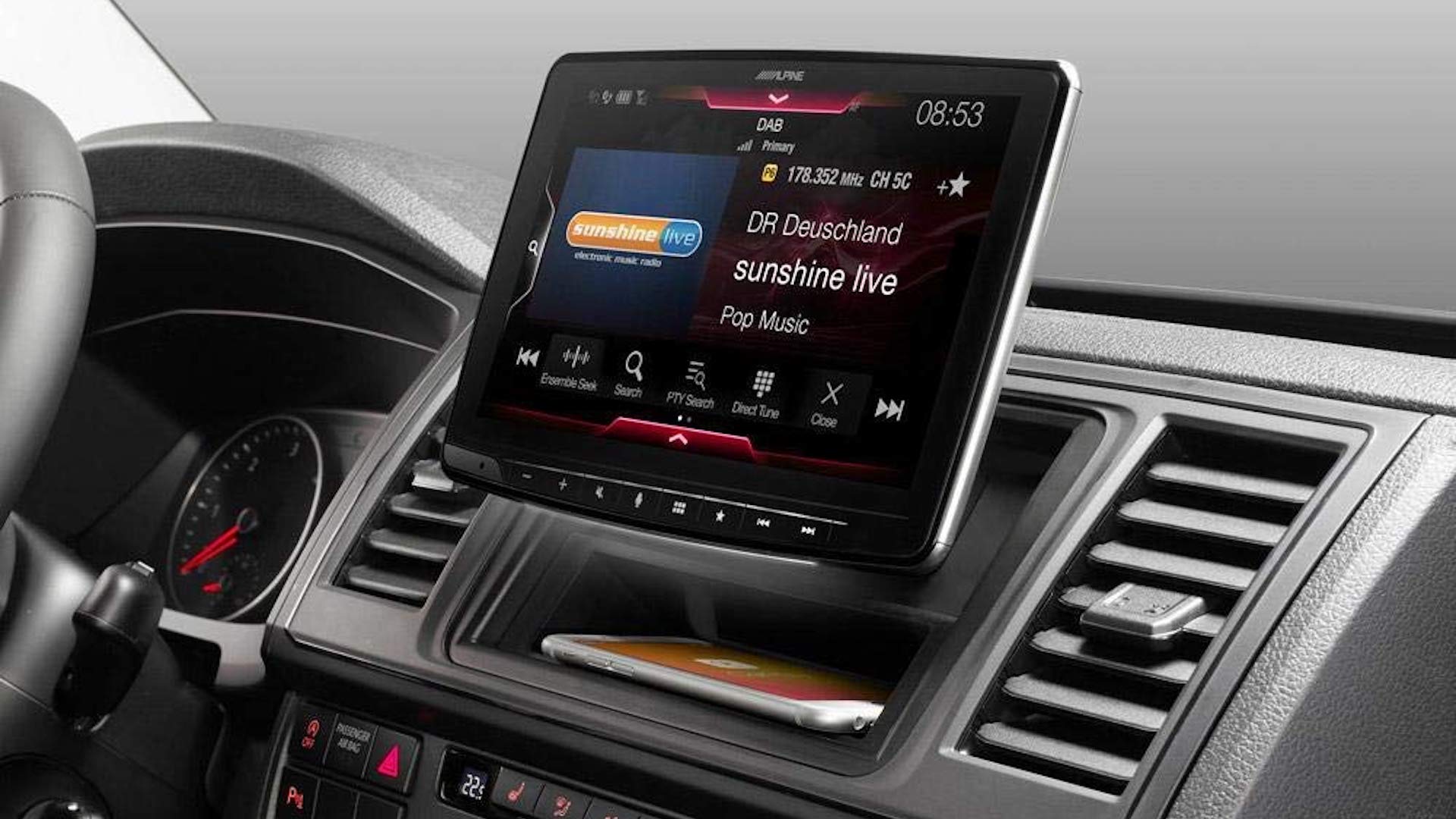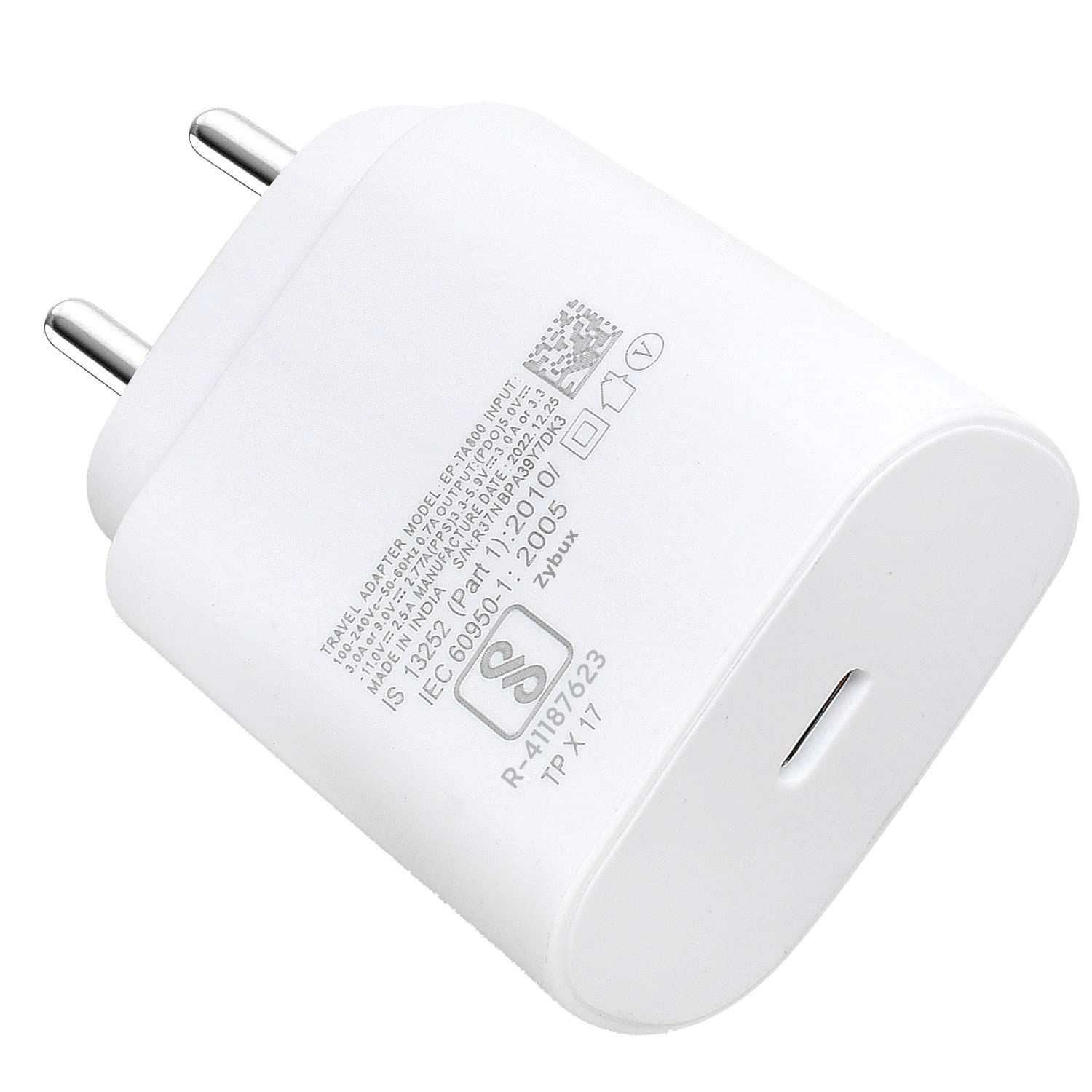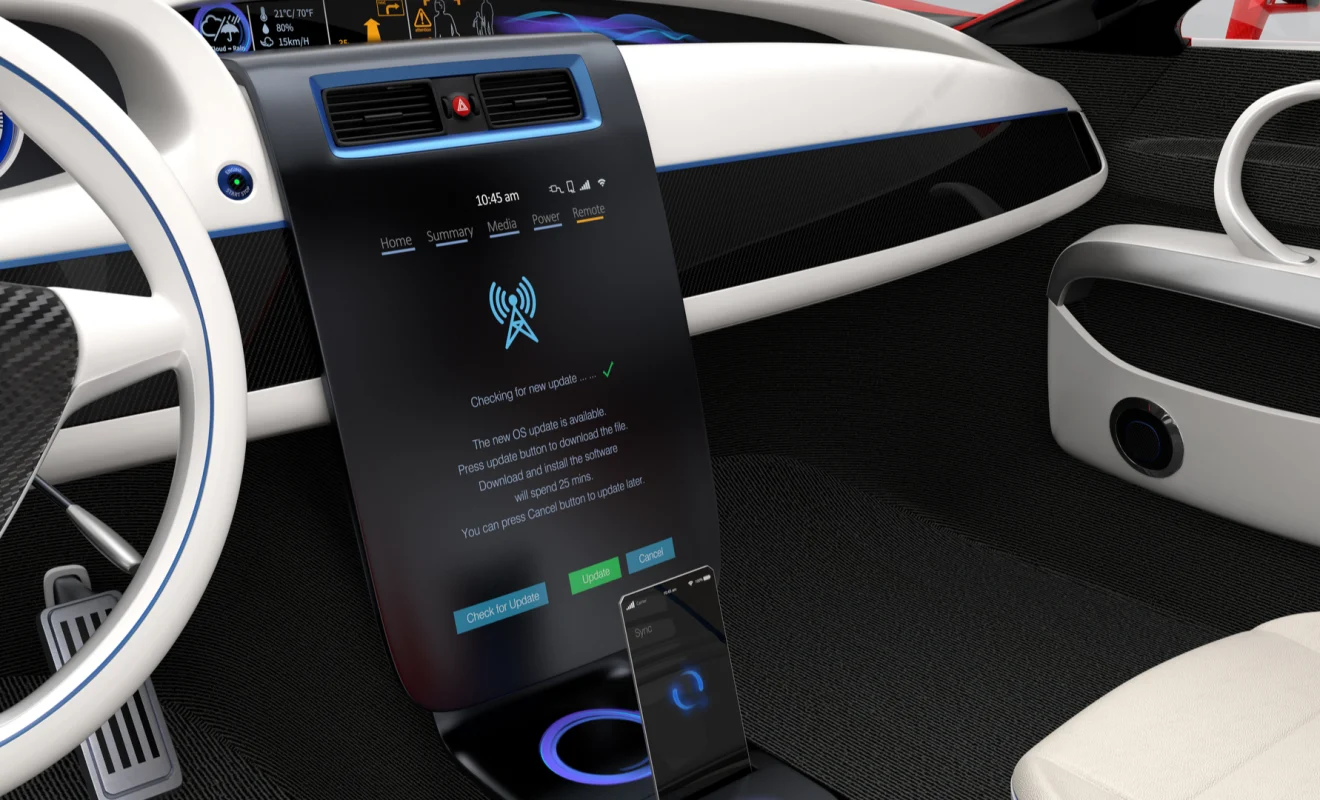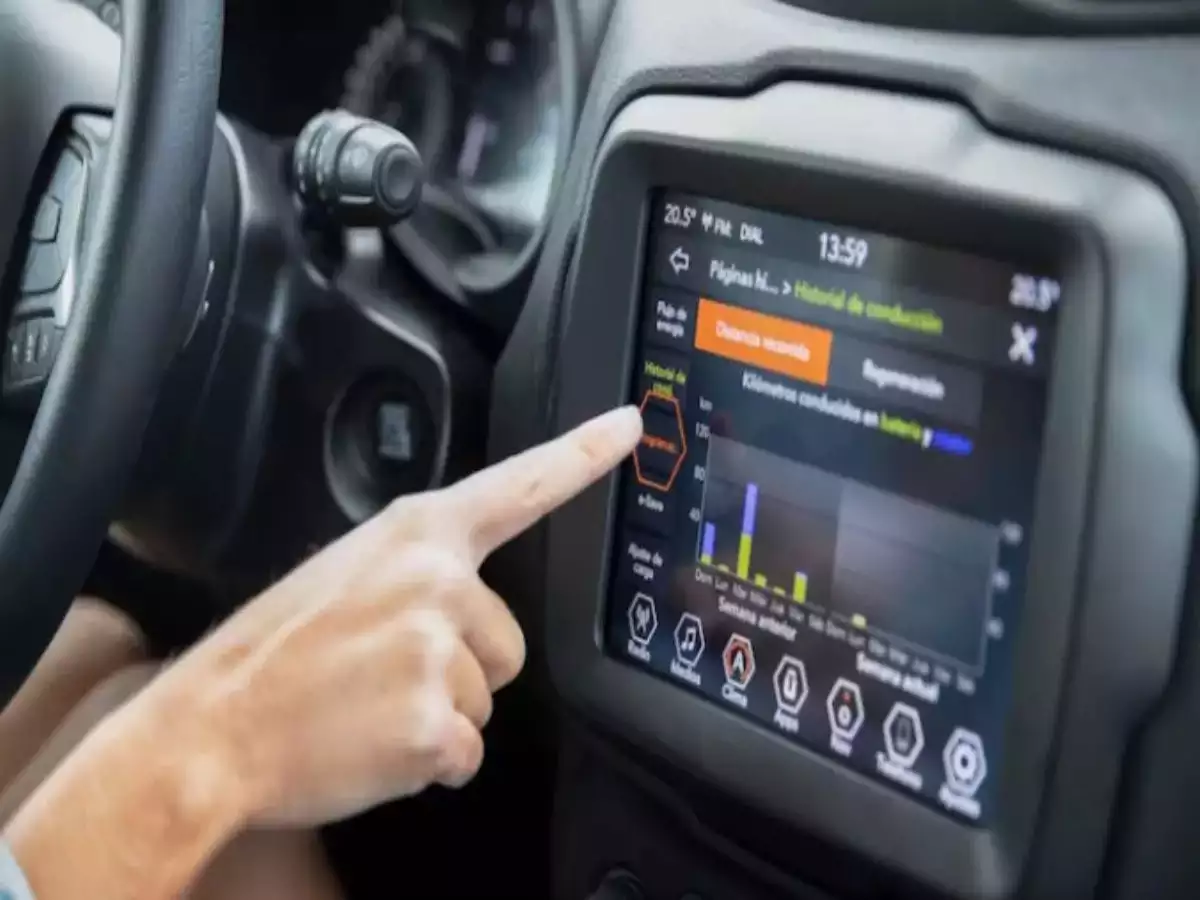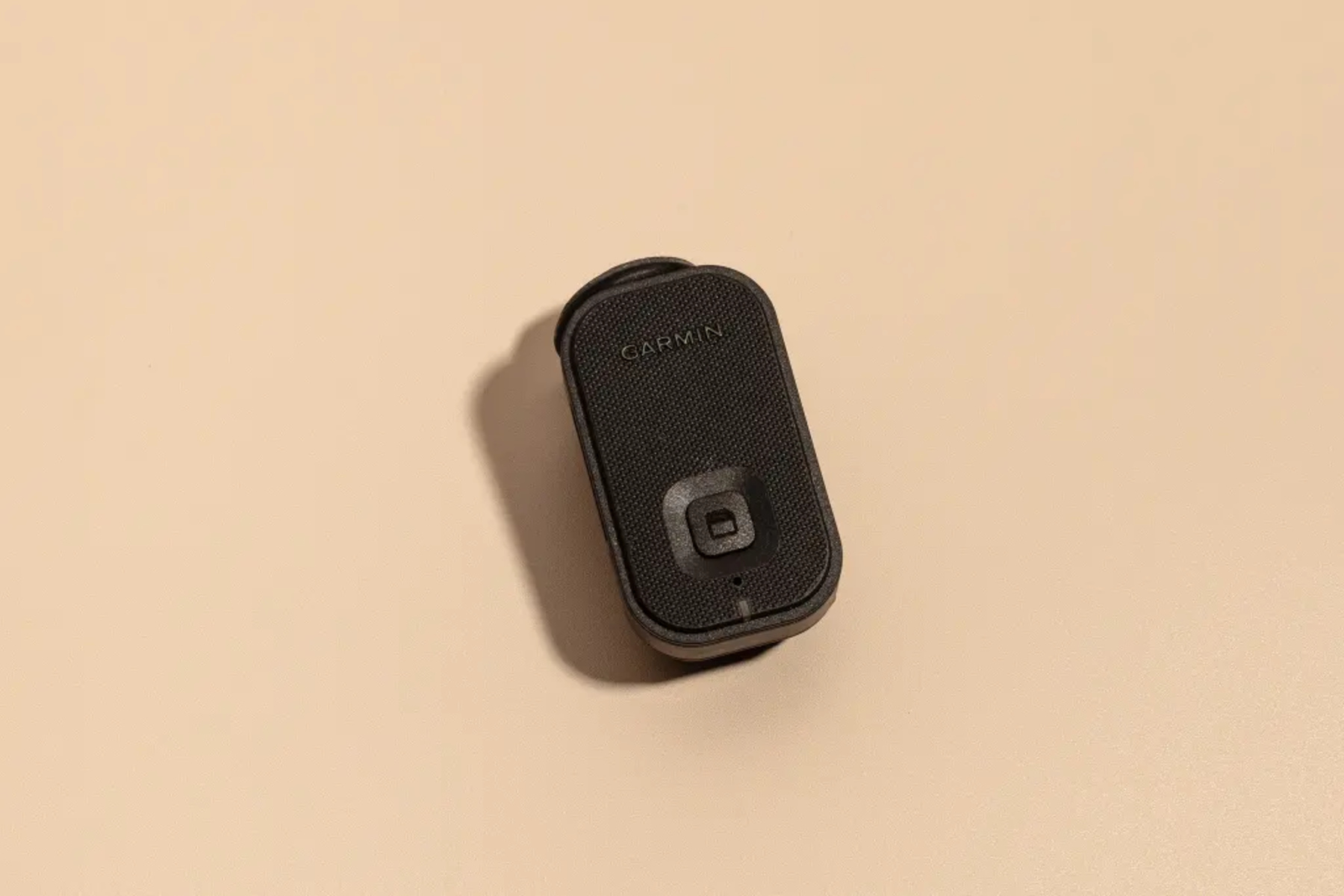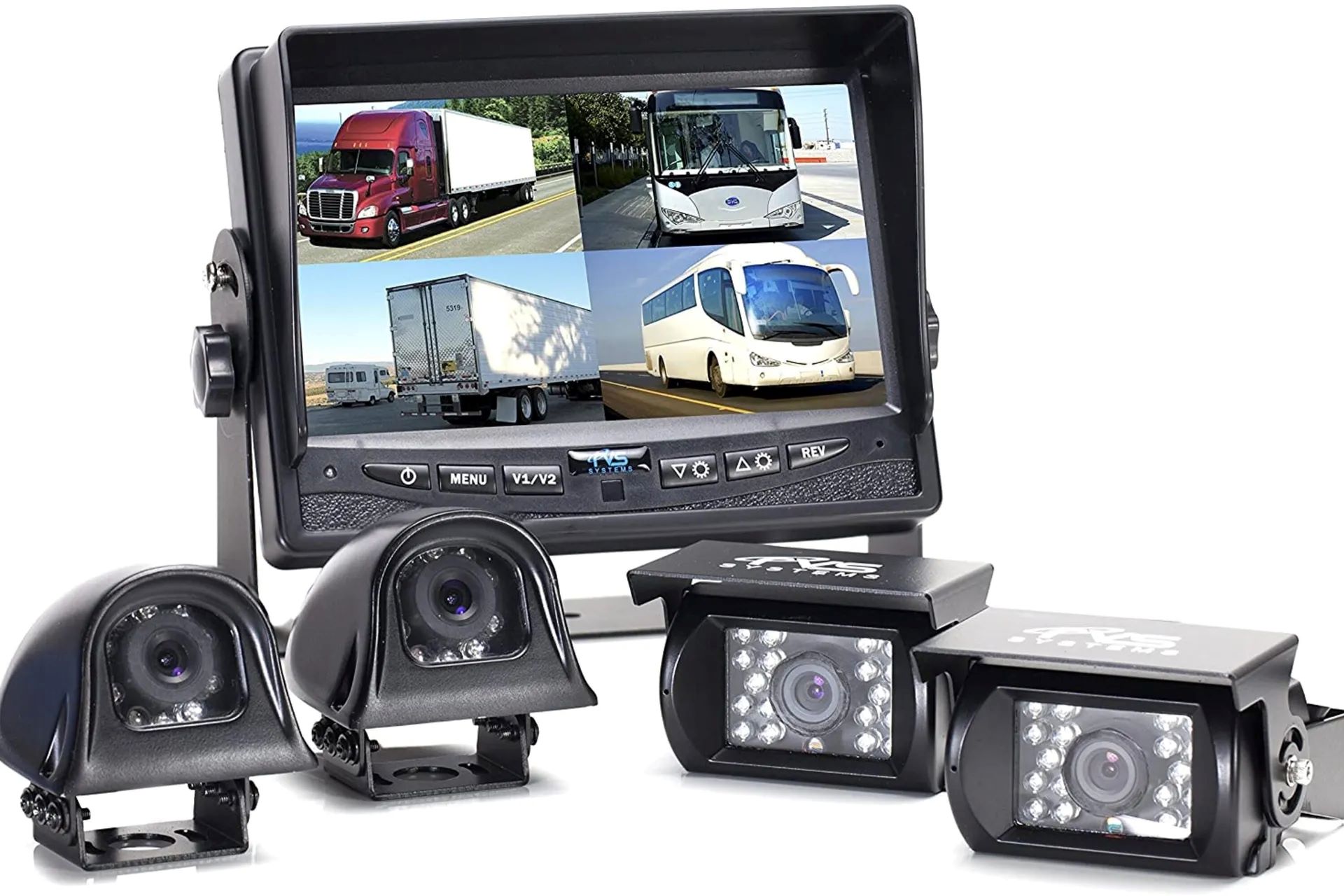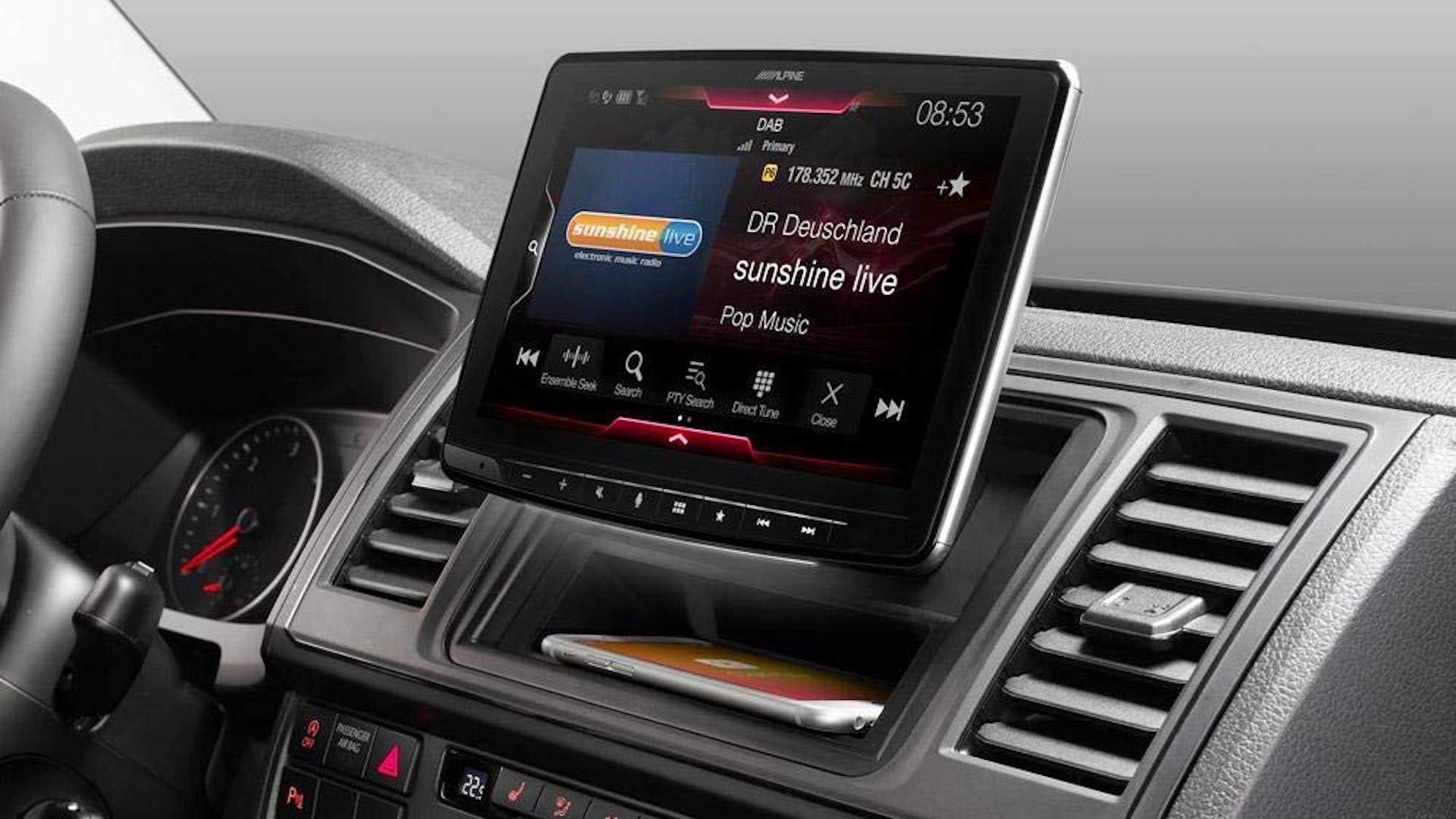Introduction
Welcome to the digital age, where staying connected is a necessity no matter where you are. Whether you’re on a road trip, stuck in traffic, or simply commuting to work, having access to Wi-Fi in your car can be a game-changer. Gone are the days when you had to rely on spotty cellular data or find the nearest coffee shop to get a Wi-Fi connection.
In-car Wi-Fi brings the convenience of a high-speed internet connection right into your vehicle, allowing you to stay connected to the world and enjoy online activities even while on the go. From accessing maps and navigation apps to streaming music and movies, having Wi-Fi in your car opens up a world of possibilities.
But how does one go about getting Wi-Fi in their car? With advancements in technology, there are several options to choose from, depending on your needs and preferences. In this article, we will explore the different methods available, the pros and cons of each, and provide practical guidance on setting up Wi-Fi in your car.
Whether you’re planning a road trip, need Wi-Fi for work, or simply want to entertain your passengers during long drives, this article will help you navigate the world of in-car Wi-Fi and make an informed decision. So, buckle up and let’s dive into the fascinating world of in-car connectivity!
How does in-car Wi-Fi work?
In order to understand how in-car Wi-Fi works, let’s break it down into three main components: the internet source, the Wi-Fi device, and the connected devices.
The internet source for in-car Wi-Fi can vary depending on the method you choose. Some options utilize a mobile data network, similar to your smartphone’s data plan. Others may require a separate subscription or connection to an external Wi-Fi network, such as a public hotspot or a wireless router installed in your car.
The Wi-Fi device acts as the intermediate between the internet source and your connected devices. This device could be a dedicated mobile hotspot, a built-in wireless system in your car, or even your smartphone functioning as a Wi-Fi hotspot.
Connected devices are any devices that can connect to the in-car Wi-Fi network. This could include smartphones, tablets, laptops, or any other device capable of connecting to a Wi-Fi signal. These devices will then use the Wi-Fi connection to access the internet and perform various online activities.
Once the in-car Wi-Fi is set up and the devices are connected, you can enjoy a seamless internet experience within your vehicle. You can use navigation apps for real-time directions, stream music or movies for entertainment, stay connected on social media, or even get work done on the go.
It’s important to note that the performance and speed of your in-car Wi-Fi connection will depend on various factors such as the strength of the internet source, the capabilities of the Wi-Fi device, and the number of connected devices simultaneously using the Wi-Fi network. Therefore, it’s essential to consider these factors when choosing the right in-car Wi-Fi solution for your needs.
In the next sections, we will explore different options for getting Wi-Fi in your car, ranging from mobile hotspot devices to built-in car Wi-Fi systems and using your smartphone as a Wi-Fi hotspot. We will discuss the advantages and disadvantages of each option, helping you make an informed decision that suits your requirements.
Different options for getting Wi-Fi in your car
When it comes to getting Wi-Fi in your car, there are several options to choose from. Each option offers its own set of advantages and considerations. Let’s explore some of the popular choices:
- Mobile hotspot devices: Mobile hotspot devices, also known as portable Wi-Fi hotspots or dongles, are standalone devices that use a cellular connection to provide internet access. These devices create a Wi-Fi network that your devices can connect to, ensuring internet connectivity on the go. They are compact and portable, allowing you to take them anywhere you go. However, they often require a separate data plan and have limitations in terms of data usage and coverage.
- Built-in car Wi-Fi systems: Some car manufacturers offer built-in Wi-Fi systems as a feature in newer models. These systems typically use an external SIM card or a built-in modem to provide internet access to your vehicle. With built-in car Wi-Fi, you have the advantage of seamless integration with your car’s infotainment system, and you can often connect multiple devices simultaneously. However, this option is usually available as an add-on feature and may require a monthly subscription.
- Using your smartphone as a Wi-Fi hotspot: Most smartphones today come with a feature that allows you to turn them into a mobile Wi-Fi hotspot. By enabling this feature, your phone uses its data connection to create a Wi-Fi network that other devices can connect to. This option is convenient if you already have a suitable data plan and want to avoid additional costs. However, keep in mind that using your smartphone as a hotspot can drain your battery quickly and may result in additional data charges if you exceed your plan’s data limit.
When choosing the best option for your in-car Wi-Fi, consider factors such as cost, coverage, data limits, and the number of devices you want to connect. Also, think about how often you will be using it and whether you prefer a standalone device or an integrated system.
In the following sections, we will dive deeper into each option, discussing their pros and cons, setup process, and any additional considerations you should keep in mind to make an informed decision. Whether you are a frequent traveler, a busy professional, or simply someone who enjoys having connectivity on the road, there is a Wi-Fi solution that suits your needs.
Mobile hotspot devices
Mobile hotspot devices, also known as portable Wi-Fi hotspots or dongles, are standalone devices that provide internet access in your car by utilizing a cellular connection. These compact and portable devices work similarly to your smartphone’s hotspot feature but with the advantage of dedicated hardware for improved connectivity and performance.
One of the significant advantages of using a mobile hotspot device is its flexibility and portability. You can easily take it with you wherever you go, whether it’s a long road trip or a short daily commute. The device creates a Wi-Fi network that your devices can connect to, giving you access to high-speed internet no matter where you are.
Setting up a mobile hotspot device is usually straightforward. You’ll need to insert a SIM card and activate a data plan that suits your needs. Many mobile carriers offer data plans specifically designed for these devices, allowing you to choose the right amount of data based on your usage. Some devices may also support multiple SIM cards or offer features like external antenna ports for improved signal reception.
When it comes to limitations, mobile hotspot devices have their fair share. The performance and coverage depend on the strength of the cellular network, which can vary depending on the location. In remote areas or areas with weak cellular reception, you might experience slower internet speeds or no connectivity at all.
Data limits are another factor to consider. Most data plans have specific limits on the amount of data you can use per month. If you exceed these limits, you may incur additional charges or experience reduced speeds. However, many mobile hotspot devices come with helpful features like data usage tracking that can help you monitor your consumption and avoid unexpected charges.
Overall, mobile hotspot devices are a popular choice for getting Wi-Fi in your car due to their convenience and flexibility. They offer dedicated hardware for improved connectivity and portability, allowing you to stay connected on the go. However, it’s essential to consider factors such as data limits, coverage, and signal strength when choosing a mobile hotspot device and data plan that suits your needs.
In the next section, we will explore another option for getting Wi-Fi in your car – built-in car Wi-Fi systems. These systems provide seamless integration with your vehicle’s infotainment system and offer additional features that enhance your in-car connectivity experience.
Built-in car Wi-Fi systems
Built-in car Wi-Fi systems are becoming increasingly popular in newer car models, offering a seamless and integrated solution for in-car connectivity. These systems utilize an external SIM card or a built-in modem to provide internet access to your vehicle, allowing you to connect multiple devices simultaneously and enjoy a reliable internet connection on the go.
One of the significant advantages of built-in car Wi-Fi systems is the seamless integration with your vehicle’s infotainment system. These systems are designed to work harmoniously with your car’s existing technology, making it easy to access internet services, navigation apps, and other online features directly from your car’s display screen.
Another advantage is the convenience of not having to rely on external devices or smartphones as hotspots. With a built-in system, your car acts as its own Wi-Fi hotspot, eliminating the need for additional hardware. This can be especially convenient for families with multiple devices or for those who regularly have passengers in their vehicle.
However, it is worth noting that built-in car Wi-Fi systems are typically available as an add-on feature and may require a separate subscription or data plan. The cost of these plans varies depending on the car manufacturer and the data package you choose. While some manufacturers offer a free trial or complimentary data for a limited period, be sure to consider the ongoing costs and data limits associated with the subscription.
The performance of built-in car Wi-Fi systems largely depends on the strength of the cellular network. It’s essential to research the coverage and signal strength in the areas where you frequently drive to ensure reliable connectivity. Additionally, factors such as the number of connected devices and simultaneous usage can impact the overall performance and speed of the Wi-Fi network.
Setting up a built-in car Wi-Fi system typically involves activating the built-in modem and linking it to your account or a separate data plan. The process may vary depending on the car manufacturer, but it generally involves following the instructions provided in the car’s manual or through the manufacturer’s online portal.
If you prefer a seamless integration of Wi-Fi into your car’s existing technology and want the convenience of a dedicated in-car Wi-Fi network, a built-in car Wi-Fi system may be the ideal choice for you. Consider your budget, data needs, and how frequently you will use the internet in your car to determine if this option is the right fit.
In the next section, we will explore another option for getting Wi-Fi in your car – using your smartphone as a Wi-Fi hotspot. This option is convenient if you already have a suitable data plan and want to avoid additional costs.
Using your smartphone as a Wi-Fi hotspot
An alternative and cost-effective option for getting Wi-Fi in your car is to use your smartphone as a Wi-Fi hotspot. Most modern smartphones offer a built-in feature that allows you to share your cellular data connection with other devices, effectively turning your phone into a mobile hotspot.
Using your smartphone as a Wi-Fi hotspot offers several advantages. Firstly, it eliminates the need for additional hardware or subscriptions. As long as you have a suitable data plan on your smartphone, you can utilize its cellular connection to create a Wi-Fi network for other devices to connect to. This can be particularly beneficial if you’re trying to avoid the expenses associated with separate Wi-Fi devices or subscriptions.
Setting up your smartphone as a Wi-Fi hotspot is usually straightforward. Most smartphones have a dedicated setting in the settings menu that allows you to enable the hotspot feature. Once enabled, you can customize the network name and password to secure the connection. Then, other devices can easily connect to the Wi-Fi network you’ve created using the provided credentials.
It’s important to note that using your smartphone as a hotspot may have some limitations. One of the main considerations is the impact on your smartphone’s battery life. The hotspot feature can be quite power-intensive and may significantly drain your phone’s battery, especially if you have multiple devices connected or are using the internet extensively.
Data usage is another factor to consider. When you use your smartphone as a hotspot, the connected devices will consume data from your cellular data plan. If you have a limited data plan, it’s important to monitor your usage to avoid exceeding your plan’s data limits.
Additionally, keep in mind that your smartphone’s hotspot capabilities might not offer the same range or signal strength as dedicated mobile hotspot devices or built-in car Wi-Fi systems. The performance of your smartphone’s hotspot will depend on factors such as the strength of your cellular network and the distance between your devices and the phone.
If you already have a suitable data plan on your smartphone and want to avoid additional costs, using your smartphone as a Wi-Fi hotspot can be a convenient choice to get Wi-Fi in your car. It provides flexibility, as you can easily enable or disable the hotspot feature based on your needs. However, be mindful of battery usage, data limits, and network coverage when opting for this method.
In the upcoming sections, we will discuss additional considerations for choosing the best Wi-Fi option for your car and provide guidance on setting up Wi-Fi in your vehicle.
Considerations for choosing the best option
When it comes to choosing the best option for getting Wi-Fi in your car, there are several considerations to keep in mind. These factors will help you determine the option that aligns with your needs, budget, and usage requirements.
Data Usage: Consider how much data you anticipate using while on the go. If you are a heavy data user, a plan with sufficient data allowances or an unlimited data option may be preferable. On the other hand, if you have low data usage requirements, a hotspot device or using your smartphone as a hotspot with a smaller data plan may suffice.
Connectivity and Coverage: Evaluate the coverage and signal strength of various network providers in the areas where you frequently travel. Different providers may have varying coverage, so choose an option that can provide reliable connectivity wherever you go. Additionally, consider whether you often travel to rural or remote areas, as some networks may have limited coverage in those regions.
Number of Devices: Determine how many devices you will have connected to the Wi-Fi network in your car. If you frequently have multiple passengers who require internet access, a solution that supports multiple device connections simultaneously, such as built-in car Wi-Fi systems or dedicated hotspot devices, might be more suitable.
Integration with Car’s Infotainment System: If seamless integration with your car’s infotainment system is important to you, consider the built-in car Wi-Fi option. This will offer a more integrated experience, allowing you to access internet services and other connected car features directly through your car’s display screen.
Budget and Cost: Evaluate the cost associated with each option, including the initial setup costs as well as ongoing subscription or data plan fees. Consider your budget and find a solution that offers the right balance between cost and features.
Convenience and Portability: Assess how convenient and portable each option is for your lifestyle. If you often switch between different vehicles or require internet access on the go, a portable hotspot device or using your smartphone as a hotspot offers greater flexibility. If you prefer a seamless and integrated solution, a built-in car Wi-Fi system may be more suitable.
By considering these factors, you can narrow down your options and choose the best Wi-Fi solution for your car that meets your needs and preferences. Keep in mind that each option has its own pros and cons, and what works for one person may not work for another.
In the next section, we will provide practical guidance on setting up Wi-Fi in your car, regardless of the option you choose. This will help you get started and ensure a smooth and hassle-free setup process.
Setting up Wi-Fi in your car
Regardless of the option you choose to get Wi-Fi in your car, setting it up correctly is crucial for a smooth and reliable internet connection. Here are some general steps to guide you through the setup process:
- Choose the right option: Based on your needs and preferences, select the most suitable option for getting Wi-Fi in your car. Consider factors such as data usage, coverage, number of devices, integration with your car’s system, and budget.
- Obtain the necessary equipment: Depending on the chosen option, you might need to purchase a mobile hotspot device, subscribe to a data plan, or activate a built-in car Wi-Fi system. Ensure you have all the necessary equipment and data plan selected before proceeding.
- Follow the instructions: Consult the user manual or online resources specific to your chosen option to set up Wi-Fi in your car. The instructions will vary depending on the device or system, but usually involve activating the device, inserting a SIM card (if applicable), and connecting to the appropriate network.
- Configure network settings: Once your device or system is activated, you may need to configure network settings such as network name (SSID) and password for security. Follow the instructions provided by the manufacturer to ensure proper network setup.
- Connect your devices: Once the Wi-Fi network is set up in your car, you can connect your compatible devices to the network. Enable Wi-Fi on your devices and select the appropriate network name (SSID) from the available network list. Enter the password if required, and your devices should connect to the network seamlessly.
- Test the connection: After connecting your devices, perform a quick test to ensure that the Wi-Fi connection is working correctly. Open a web browser or use any internet-dependent application to check if you have access to the internet. If any issues arise, refer to the troubleshooting section or contact customer support for assistance.
It’s essential to familiarize yourself with the specific setup instructions for your chosen option, as the steps may vary. Refer to the user manual, manufacturer’s website, or contact customer support if you encounter any difficulties during the setup process.
Remember to always prioritize safety while setting up and using Wi-Fi in your car. Ensure that your attention remains on the road while driving and that using Wi-Fi does not distract you from safe driving practices.
In the next section, we will discuss common troubleshooting tips for addressing any issues that may arise during the setup or usage of Wi-Fi in your car. These tips will help you troubleshoot and resolve connection problems, ensuring a smooth and enjoyable in-car internet experience.
Troubleshooting common issues
While setting up and using Wi-Fi in your car, you may encounter some common issues that could affect your connectivity. Here are some troubleshooting tips to help you address these issues:
- Weak signal or low connectivity: If you experience a weak signal or low connectivity, try moving your device or car to a different location, preferably closer to the cellular network source. In some cases, using an external antenna or a signal booster can help improve the signal strength.
- Internet speed or performance issues: If you notice slow internet speeds or performance issues, check if there are any bandwidth-consuming applications or downloads running on your connected devices. Close any unnecessary applications or downloads to free up bandwidth and improve performance.
- Device connection issues: If you’re having trouble connecting your devices to the in-car Wi-Fi network, double-check that you entered the correct network name (SSID) and password. Ensure that the Wi-Fi network is enabled on your devices and that the network settings are properly configured.
- Data usage concerns: If you’re worried about exceeding your data plan’s limits or incurring additional charges, monitor your data usage regularly. Most devices and built-in systems provide features to track data usage. Consider using data-saving features on your devices and avoid data-intensive activities when not necessary.
- Battery drain issues: When using your smartphone as a hotspot or utilizing a dedicated hotspot device, be aware that it can drain your battery quickly. To conserve battery life, consider connecting your smartphone to a charger or using a power bank while using it as a hotspot. Additionally, optimize your device’s battery settings to minimize power consumption.
- Network coverage limitations: In areas with poor network coverage, you may experience intermittent or no connectivity. If you frequently travel through these areas, consider alternative solutions like switching to a different network provider or investing in a hotspot device that supports multiple network bands.
If you’ve exhausted these troubleshooting steps and are still experiencing issues, you may need to contact customer support for further assistance. They can provide specific guidance based on your device or system and help resolve any technical or connectivity problems you may be facing.
Remember to stay up to date with software updates for your devices or built-in systems. Manufacturers often release updates that address performance issues, bugs, or security vulnerabilities, which can help improve the overall Wi-Fi experience in your car.
By troubleshooting common issues, you can ensure a reliable and consistent Wi-Fi connection in your car, allowing you to enjoy all the benefits of staying connected while on the go.
In the concluding section, we will briefly recap the key points discussed in this article and emphasize the importance of choosing the right Wi-Fi option for your car.
Conclusion
Having Wi-Fi in your car can greatly enhance your driving experience by providing reliable internet connectivity on the go. Whether it’s for navigation, entertainment, or productivity purposes, staying connected while on the road has become a necessity. In this article, we explored different options for getting Wi-Fi in your car, including mobile hotspot devices, built-in car Wi-Fi systems, and using your smartphone as a Wi-Fi hotspot.
Choosing the right option depends on various factors such as data usage, coverage, number of devices, integration with your car’s infotainment system, and budget. Mobile hotspot devices offer flexibility and portability, while built-in car Wi-Fi systems provide seamless integration. Using your smartphone as a hotspot is a cost-effective solution if you already have a suitable data plan.
Setting up Wi-Fi in your car involves following the specific instructions provided by the manufacturer or service provider. It is important to configure the network settings, connect your devices, and test the connection to ensure a smooth setup process. Additionally, troubleshooting common issues such as weak signals, slow internet speeds, and device connection problems can help maintain a reliable in-car Wi-Fi experience.
Remember to prioritize safety while using Wi-Fi in your car. Avoid distractions and keep your attention on the road at all times. It is also important to be mindful of data limits and manage your usage to avoid exceeding your plan’s allowances.
In conclusion, choosing the right method for getting Wi-Fi in your car allows you to stay connected and make the most of your time behind the wheel. Consider your specific needs, budget, and preferences when selecting the Wi-Fi option that best suits you. With Wi-Fi in your car, you can enjoy a seamless and enjoyable internet experience, making your journeys more convenient and entertaining.







